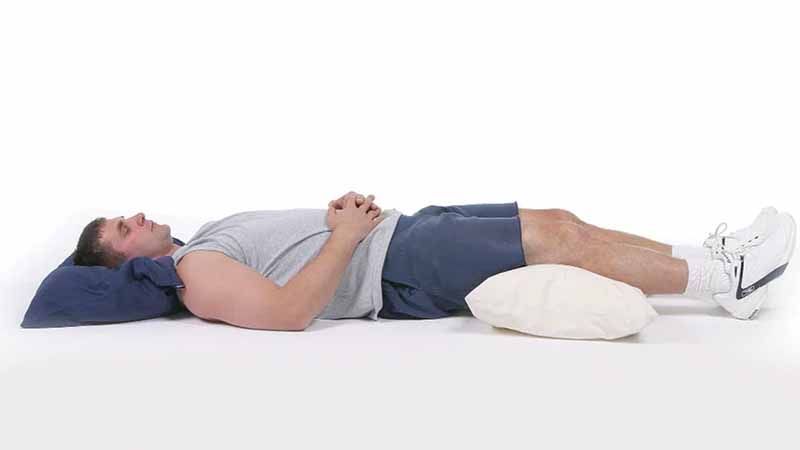Sleep and recovery go hand in hand, particularly for patients healing from spinal procedures. Dr. Larry Davidson, a specialist in spine health, believes that sleep hygiene is a critical yet often overlooked pillar of pain management. Poor sleep can intensify pain perception, impair healing and contribute to emotional stress, complicating the recovery process for spinal patients. By improving sleep habits, patients can support physical healing, reduce discomfort and regain energy for rehabilitation.
Establishing proper sleep hygiene is not just about rest; it’s a proactive step in promoting long-term spine health and comfort. Consistent sleep routines, combined with supportive bedding and an optimal sleep environment, can reduce nighttime inflammation and enhance the body’s natural repair processes.
The Impact of Sleep on Healing and Pain Perception
Sleep plays a vital role in tissue regeneration, inflammation control and nervous system regulation. After spine surgery or injury, deep sleep stages support hormone release, cell repair and immune function, all essential for healing. Conversely, disrupted sleep limits these processes, delaying recovery and exacerbating post-operative pain.
Pain and sleep exist in a feedback loop: the more pain a patient experiences, the harder it becomes to sleep; the less sleep a patient gets, the more sensitive the nervous system becomes to pain. This cycle can quickly lead to increased medication use, emotional distress and slowed rehabilitation progress.
Understanding Sleep Hygiene
Sleep hygiene refers to a set of behavioral and environmental practices that promote consistent, high-quality rest. These habits are especially important for individuals recovering from spine procedures, as positioning, mobility and discomfort often interfere with restful sleep.
Core sleep hygiene principles include maintaining a regular sleep-wake schedule, limiting screen time before bed, creating a comfortable and dark sleeping environment and avoiding stimulants such as caffeine or nicotine in the hours leading up to sleep. For spine patients, it’s also important to optimize the sleep surface and body position to avoid spinal strain.
Positioning and Support During Recovery
Spinal patients often struggle to find a pain-free sleep position. Proper positioning helps reduce mechanical stress on the surgical site or inflamed tissue while also promoting spinal alignment. For lumbar procedures, sleeping on the back with a pillow under the knees or on the side with a pillow between the legs can relieve pressure on the lower back.
Cervical spine patients may benefit from a contoured neck pillow that maintains alignment without straining surgical hardware or soft tissues. Some may also benefit from adjustable beds or recliners that allow semi-upright positioning, especially in the early days after surgery.
Finding the optimal sleep setup may involve trial and error, but it’s key to reducing nighttime discomfort and supporting uninterrupted rest.
Dr. Larry Davidson shares, “If the progress that has been made in this field, just in the last decade, is any indication of the future, then I would predict a continuation of significant advances not only in surgical approaches but also the technology that helps the spine surgeon accomplish his/her goals. It’s next to impossible not to be excited about what’s around the corner in our journey of progress.” This spirit of innovation extends beyond the operating room, influencing post-operative care strategies, like sleep ergonomics, that contribute meaningfully to patient recovery and comfort.
The Role of Sleep Timing and Consistency
Establishing a consistent sleep schedule helps regulate the body’s circadian rhythm, which governs the sleep-wake cycle. Going to bed and waking up at the same times each day, even on weekends, can help patients fall asleep more easily and reduce nighttime awakenings.
This consistency is especially helpful for patients experiencing anxiety or sleep disruptions related to pain. When the body anticipates rest at a predictable time, it naturally begins to wind down and prepare for restorative sleep.
Patients recovering from spine procedures may also benefit from short daytime naps, provided they are limited to 20–30 minutes and don’t interfere with nighttime sleep.
Managing Nighttime Disruptions and Pain Flare-Ups
Many spinal patients experience pain spikes during the night due to inflammation, positioning or reduced movement. Preparing for these disruptions with a nighttime comfort plan can make a big difference.
Strategies may include pre-bedtime stretching, heat or cold therapy, wearing a soft brace if prescribed or adjusting pillows for better support. Some patients keep water, pain-relief supplies or relaxation aids nearby to avoid fully waking up during brief periods of discomfort.
If pain or restlessness occurs, relaxation techniques such as progressive muscle relaxation, guided imagery or focused breathing can help ease the body back into sleep.
Creating a Sleep-Friendly Environment
Environmental factors often interfere with quality sleep. Noise, light, room temperature and clutter all affect how easily patients fall and stay asleep. Spine patients can benefit from blackout curtains, white noise machines and maintaining a room temperature between 60- and 67 degrees Fahrenheit.
Comfortable, supportive mattresses and bedding are also critical. Memory foam toppers, wedge pillows or body cushions can be added for extra support. Some individuals may also benefit from a lavender-scented diffuser or calming music to reinforce sleep cues and reduce stress.
Eliminating distractions, especially electronics, is essential. Blue light exposure from phones, tablets or televisions can delay melatonin production and confuse the body’s natural sleep-wake rhythm.
Supporting Sleep with Nutrition and Activity
Diet and exercise also influence sleep quality. Large, heavy meals close to bedtime can cause digestive discomfort, while too much caffeine or sugar in the evening can prevent the body from winding down. Hydration should be steady throughout the day but tapered off in the evening to minimize nighttime awakenings.
Light physical activity promotes circulation and eases muscle tension, helping patients feel more ready for sleep. However, vigorous exercise should be avoided two to three hours before bedtime, as it may increase alertness.
Balanced blood sugar, gentle movement and anti-inflammatory nutrition can support the hormonal processes that signal the body to rest and repair.
Mindfulness and Stress Reduction for Better Sleep
Mental rest is just as important as physical rest. Anxiety about recovery, fear of pain or frustration with mobility can create a state of mental hyperarousal that prevents sleep. Mindfulness practices like meditation, gratitude journaling or evening breathing exercises help signal to the brain that it’s safe to relax.
Patients who develop a calming pre-bed routine, dim lighting, slow-paced activities and gentle music can reinforce a consistent wind-down period that leads to more restful sleep. When stress is managed, the nervous system can transition more easily from the alert state needed during the day to the restorative state required for quality sleep and healing.





